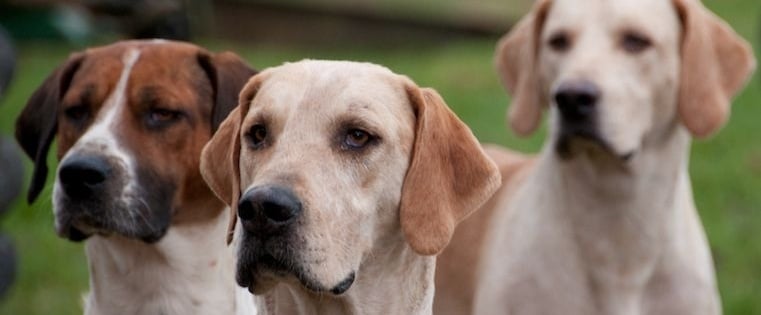Imagine you were telling a friend about your vacation. Would you spend the most time describing the sights you visited? The music you listened to? The emotions you experienced?
The answer hinges on your individual word catalog. According to Steve W. Martin, author of “Heavy Hitter Selling: How Successful Salespeople Use Language and Intuition to Persuade Customers to Buy,” we interpret the world through three “filters”: Visual, auditory, and kinesthetic.
People usually favor one specific filter over the others, which influences the language they use. People with visual word catalogs primarily use sight-related words and examples, like “I see what you mean,” and “Looks good to me.”
Those with auditory word catalogs rely on sound-based language. They might say, “I hear you,” or “Sounds great.”
Finally, people with kinesthetic word catalogs speak in terms of touch and feelings. They use expressions such as, “Let’s touch base later,” “I can handle that,” and “I don’t grasp what you mean.”
Why do word catalogs matter in sales? Identifying your prospect’s primary word catalog allows you to put your message in the right terms. Not only will your words resonate more with the buyer, they’ll subconsciously feel like you’re on the same page.
Choosing a Word Catalog Strategy
There are two different approaches to using word catalogs. If you tend to work a limited number of high-value deals, it’s probably worth the time and energy to identify each contact’s primary word catalog. Once you know their catalog, you can use the appropriate language with each.
However, if your deals are smaller or more transactional, you likely don’t have enough bandwidth to figure out the word catalog of every buyer you talk to. Instead, hone in on the most common word catalogs for your buyer personas. Perhaps one of your personas, a sales VP, tends to use a visual word catalog. Another persona, the CEO of a small company, tends to use a kinesthetic word catalog. With this insight, you can choose a word catalog based on your prospect’s matching persona.
Identifying Word Catalogs by Keyword
To identify the word catalog for an individual person or buyer persona, Martin suggests paying attention to the adjectives and verbs they use. He calls these “keywords.”
Each word catalog includes thousands of keywords. Use the following examples to get a sense of which words belong to each catalog.
Visual keywords:
- Clarify
- Clear
- Display
- Focus
- Highlight
- Illuminate
- Illustrate
- Imagine
- Outlook
- Perspective
- Show
- Survey
Auditory keywords:
- Articulate
- Ask
- Digress
- Discuss
- Note
- Paraphrase
- Quiet
- Recap
- Rephrase
- Say
- Talk
- Tell
Kinesthetic keywords:
- Catch
- Clinch
- Draw
- Feel
- Friction
- Hard
- Impact
- Move
- Nip
- Smooth
- Throw
- Walk
Identifying a Prospect’s Word Catalog
To determine a specific contact’s word catalog, print their LinkedIn profile, two or three blog posts, most recent tweets, and any other online content you can find.
Then highlight each type of keyword in a different color (i.e., blue for visual, green for auditory, yellow for kinesthetic). The most frequently occurring color indicates your prospect’s word catalog.
You can also complete this exercise with emails they’ve sent you.
As a bonus, it gives you a list of terms to use with that specific prospect. Incorporating a few of their terms into your messaging has the same effect as physical mirroring: It makes you seem more trustworthy.
To quickly hone in on someone’s word catalog, offer to send them a relevant resource and ask which form they’d prefer.
For instance, you might say, “We have some great resources on migrating data to the cloud. I can send you a graphic, a podcast episode, or a blog post. Which would you like?”
Visual thinkers will usually opt for the graphic, auditory thinkers will choose the podcast, and kinesthetic thinkers will select the blog post. Although this isn’t a definitive indication of the prospect’s word catalog, it’s a helpful shortcut.
Identifying a Buyer Persona’s Word Catalog
If you’re gauging your prospect’s word catalogs by persona, do a similar exercise with multiple emails from multiple prospects.
- Print 10 emails from each buyer persona.
- Create a three-column list for each persona. Mark the columns “V,” “A,” and “K,” for Visual, Auditory, and Kinesthetic, respectively.
- Read through the emails. Put a tally mark in the appropriate column whenever you find a visual, auditory, or kinesthetic keyword.
The results indicate which word catalog is dominant by persona.
Want to make this process much faster? Ask the other salespeople on your team to do it with you. If you and nine teammates each analyze 20 emails from two separate buyer personas, you’ll have results from 10,000 emails per persona -- in a fraction of the time.
Using Word Catalogs
Once you’ve identified a prospect’s word catalog, adapt your language accordingly. For instance, if you’re emailing a prospect with a visual word catalog, you might write, “Let’s get a fresh perspective … ” But if you were sending a message to a prospect with an auditory word catalog, you’d write, “We might benefit from a fresh voice … ”
You can also use a buyer’s word catalog to choose the most appropriate medium for sales presentations. Suppose you’re giving a demo to a prospect with a kinesthetic word catalog. To drive home your product’s value, you give her samples to hold and touch. If you’re selling an intangible product, like software, you might give her your laptop so she can explore the interface.
Sending your prospect a helpful piece of content? Send infographics, image-heavy blog posts, and videos to prospects with visual word catalogs and podcasts and videos to prospects with auditory ones. You can send any type of content to prospects with kinesthetic word catalogs, but consider incorporating a handwritten letter or physical product brochure so they have something to hold in their hands.
When working with multiple prospects, it’s hard to keep track of each individual’s primary word catalog. Help your memory out by adding “word catalog” as a field in your CRM. Every time you add a new contact, simply fill out this field.
Salespeople occasionally feel like they’re speaking a different language than buyers. Use word catalogs to your advantage, and you’ll never again wonder if your prospects are paying attention.








![6 Essential Elements of a Successful Sales Pitch or Presentation [Infographic]](https://53.fs1.hubspotusercontent-na1.net/hubfs/53/sales-pitch.jpg)



![The 6 Surprising Characteristics of Successful Pitches [New Research]](https://53.fs1.hubspotusercontent-na1.net/hubfs/53/00-Blog_Thinkstock_Images/sales-pitch-compressor-762864-edited.jpg)